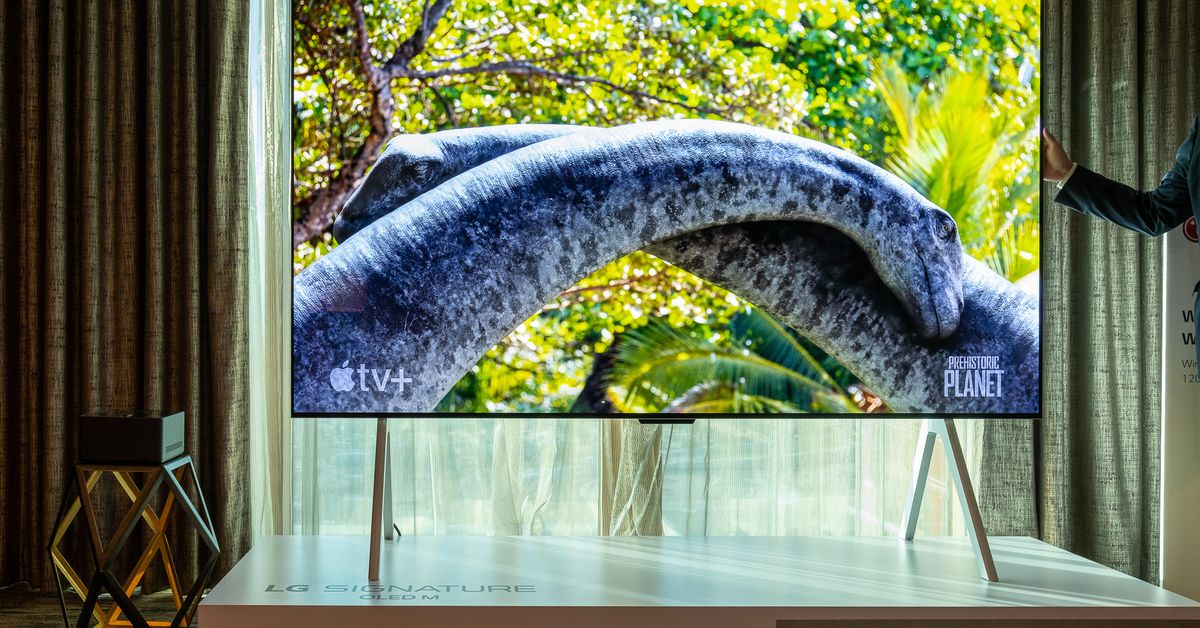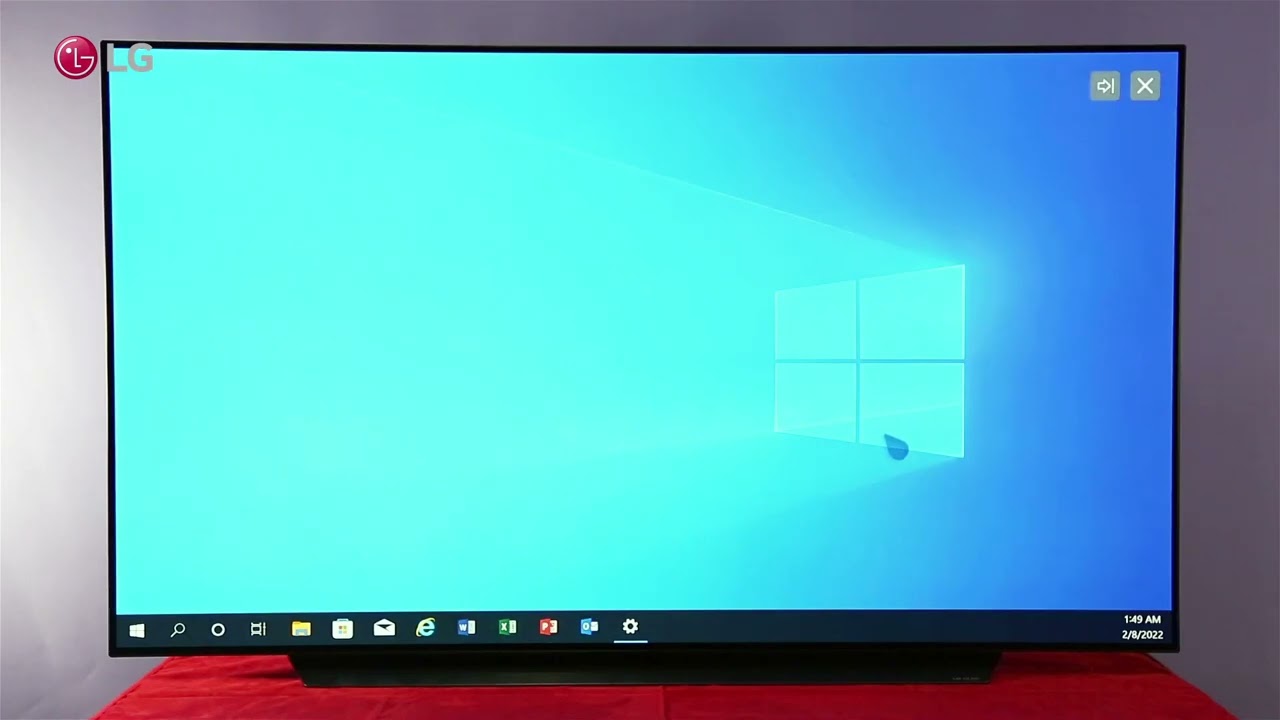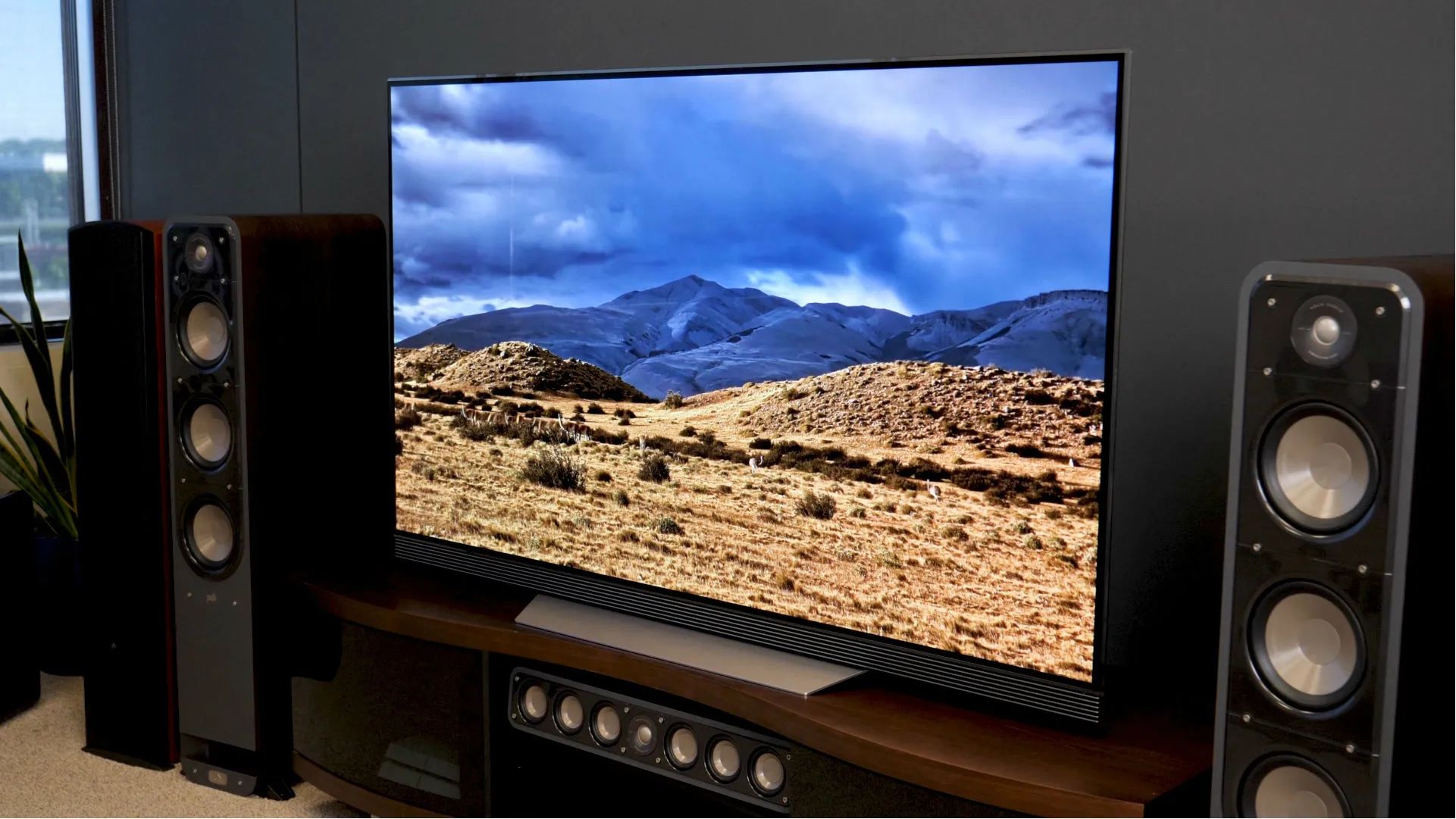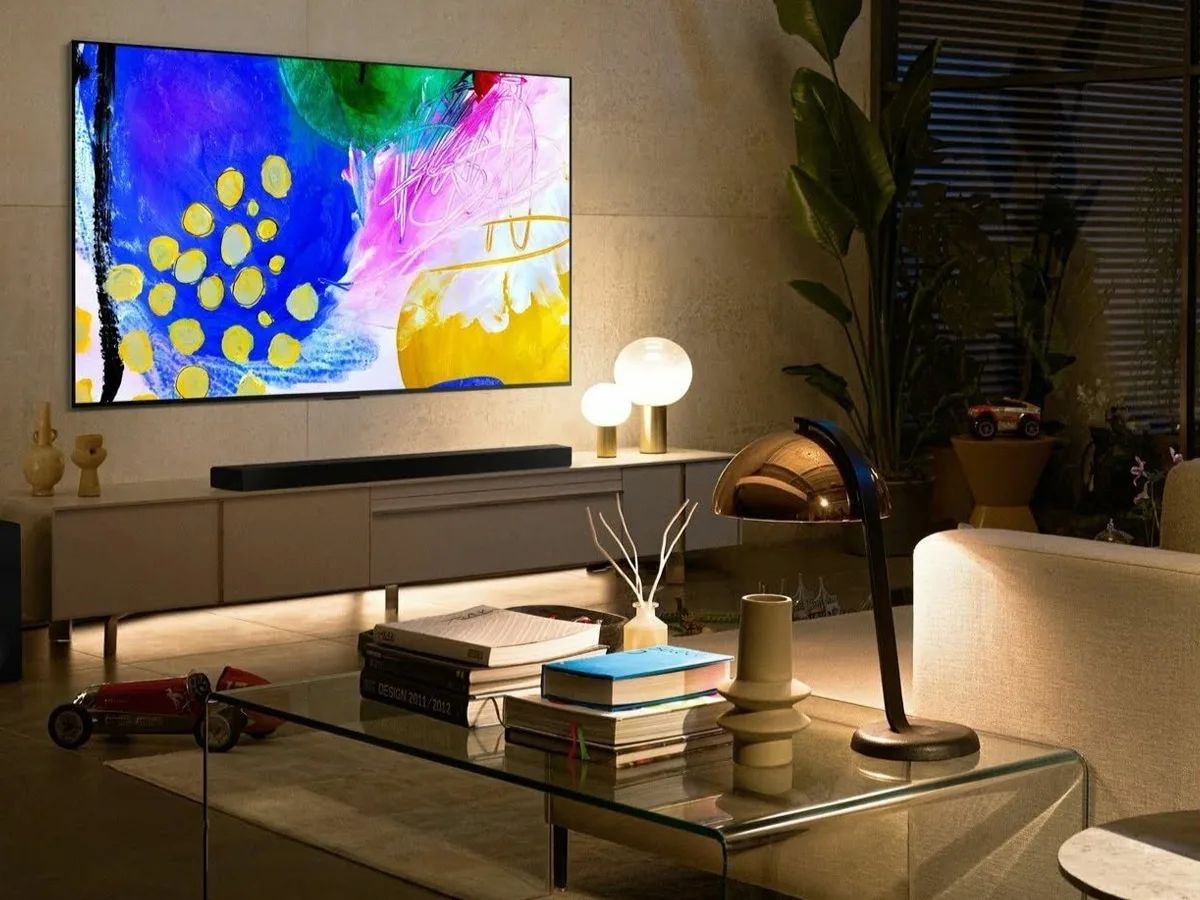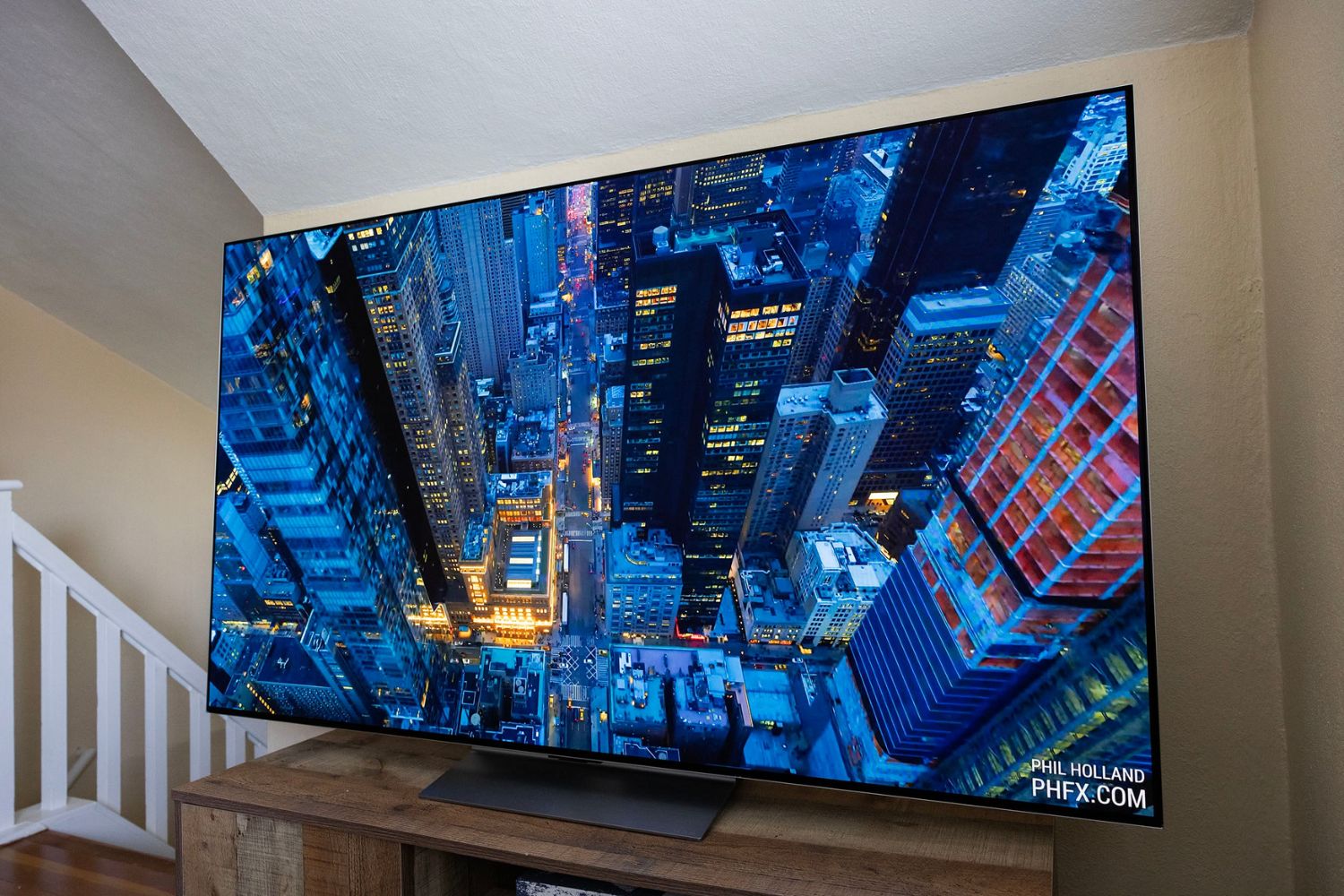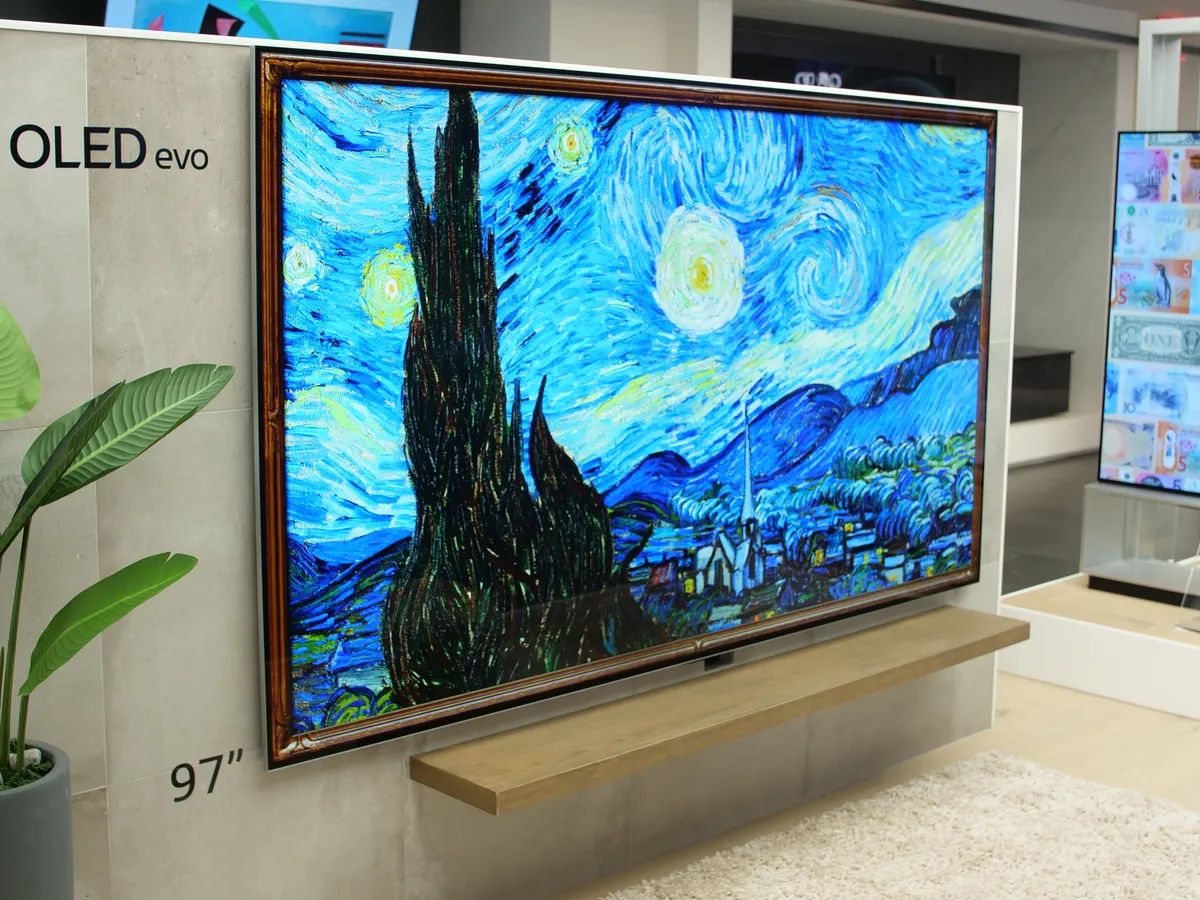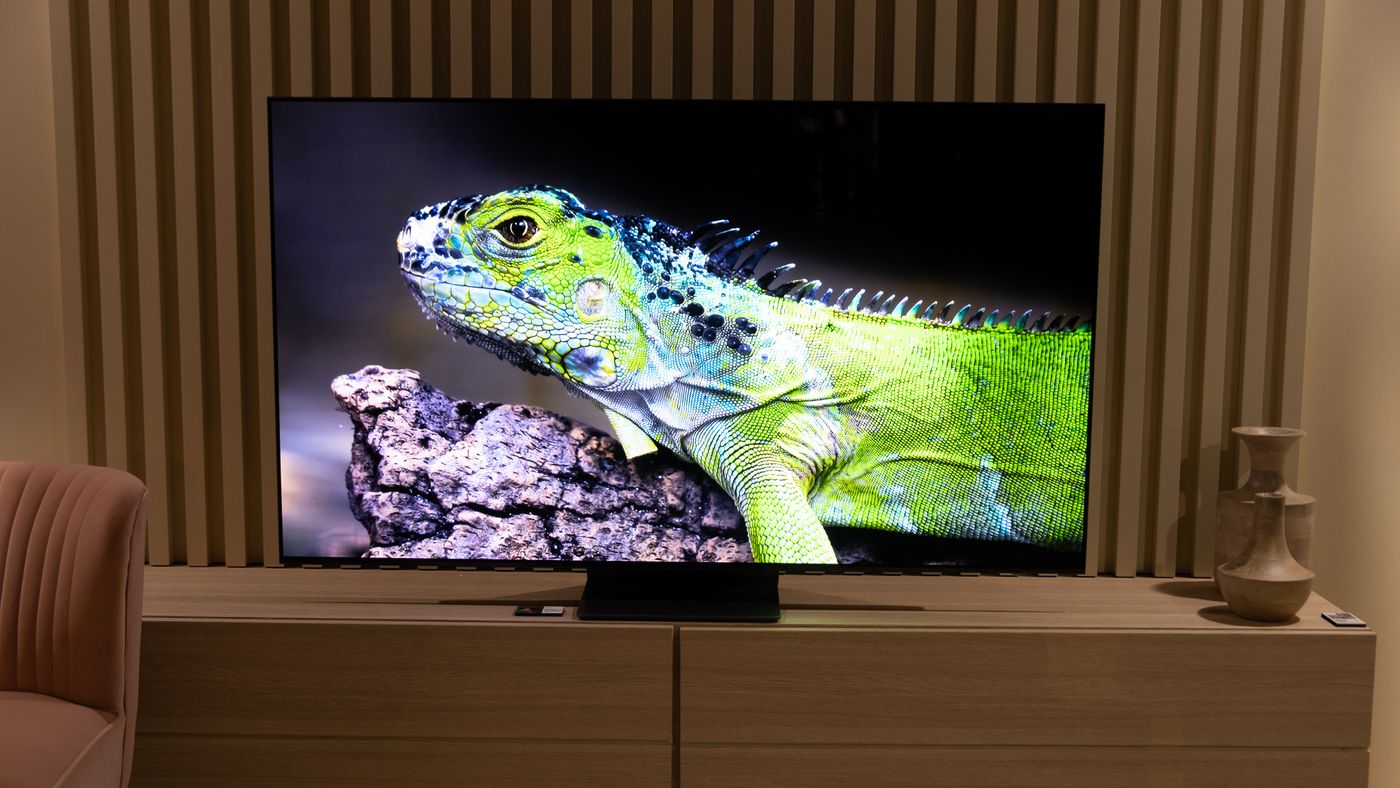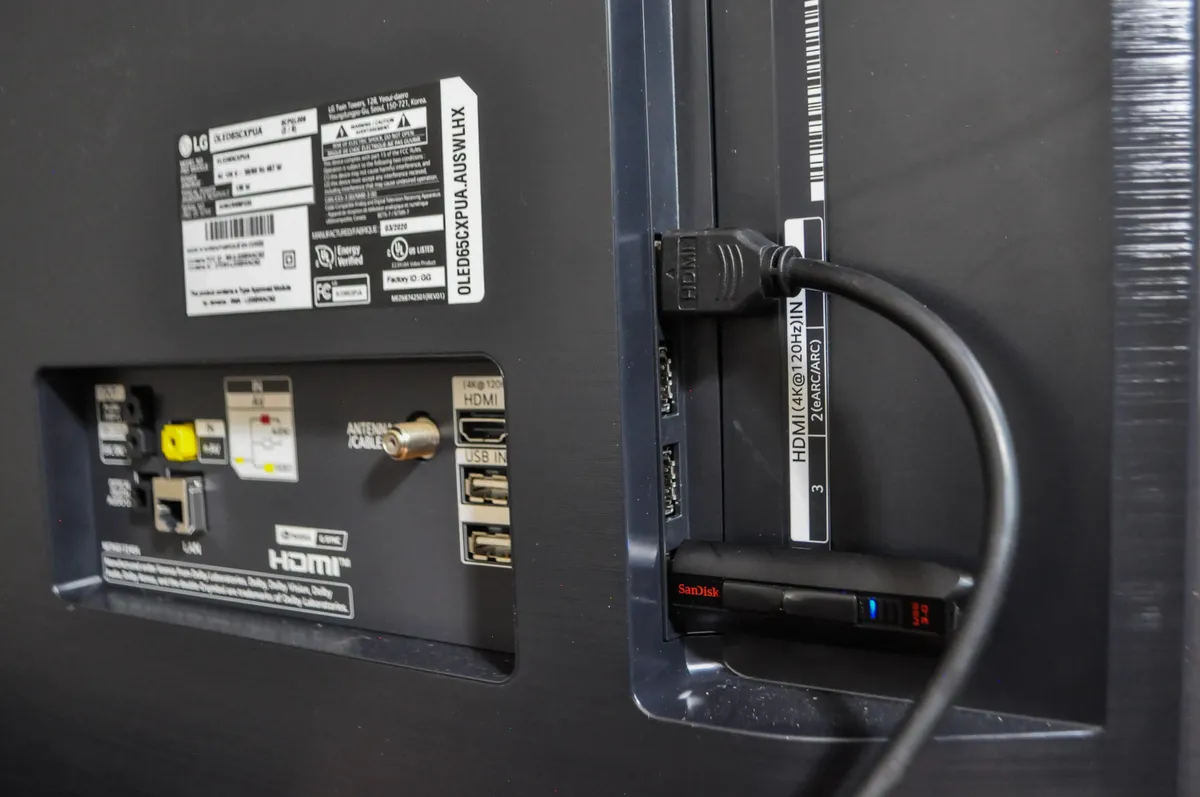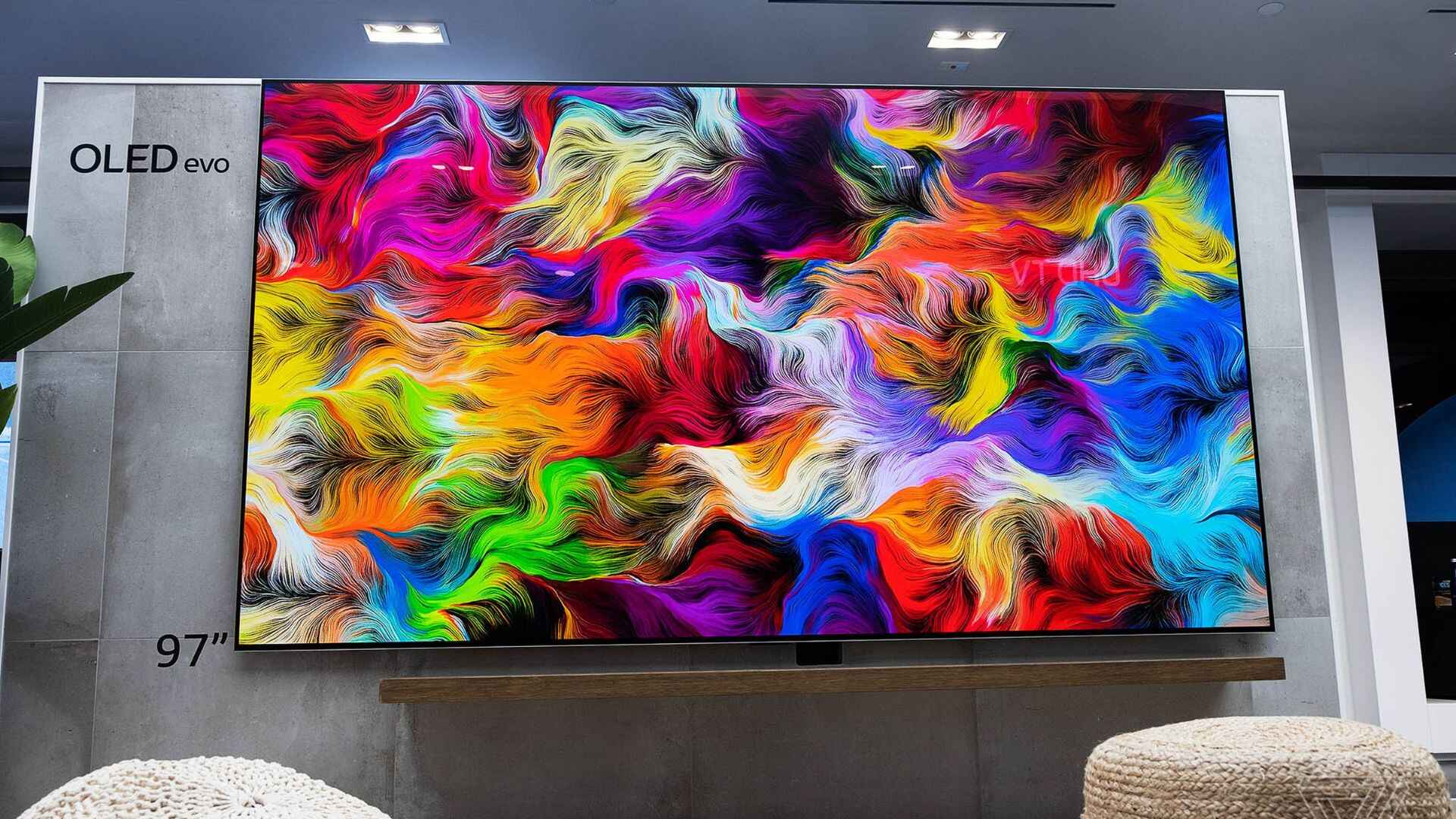Introduction
Welcome to the world of OLED TVs, where the visuals are stunning, vibrant, and lifelike. As you dive into the realm of high-definition entertainment, you may find yourself needing to understand the technicalities surrounding HDMI cables and their compatibility with OLED TVs. HDMI, or High-Definition Multimedia Interface, is the go-to connection for transmitting audio and video signals between your TV and other devices.
In this article, we will explore the different types of HDMI cables and explain why OLED TVs require specific ones. We will also delve into the differences between HDMI 1.4 and HDMI 2.0, helping you determine which is the right choice for your OLED TV. Additionally, we will cover key considerations such as cable length, quality, and compatibility, ensuring you make an informed decision when selecting an HDMI cable for your OLED TV.
Before we dive into the details, though, let’s take a moment to appreciate the breathtaking visuals that OLED technology brings to your living room. OLED, which stands for Organic Light-Emitting Diode, offers unparalleled contrast, color accuracy, and deep blacks. Each pixel in an OLED display emits its own light, resulting in vibrant and lifelike images with incredible detail.
Now, let’s unravel the world of HDMI cables and explore why OLED TVs require specific cables to harness their true potential.
Understanding HDMI Cables
HDMI cables are essential components when it comes to connecting your OLED TV to external devices such as gaming consoles, Blu-ray players, soundbars, and streaming devices. These cables carry both high-definition video and audio signals, providing a seamless and immersive entertainment experience.
The first thing to understand about HDMI cables is that they come in different versions, each with its own capabilities and specifications. The most common versions are HDMI 1.4 and HDMI 2.0. HDMI 1.4 supports a maximum resolution of 4K at 30Hz, while HDMI 2.0 can handle 4K resolution at 60Hz. Additionally, HDMI 2.0 offers features like HDR (High Dynamic Range), which enhances color and contrast, and increased bandwidth for smoother video playback.
It’s important to note that HDMI cables are backward compatible, which means you can plug a newer HDMI 2.0 cable into an older HDMI 1.4 port and still get a functional connection. However, you won’t be able to take advantage of the additional features and capabilities offered by HDMI 2.0 unless both the port and the cable support it.
Another aspect to consider is the type of HDMI cable you choose. There are various categories, including Standard HDMI, High-Speed HDMI, and Premium High-Speed HDMI. Standard HDMI cables are suitable for resolutions up to 720p or 1080i, while High-Speed HDMI cables can handle higher resolutions, including 4K. Premium High-Speed HDMI cables are designed to support the highest resolutions and offer additional features like Ethernet connectivity and enhanced audio return channel (eARC) support.
When selecting an HDMI cable for your OLED TV, it’s crucial to choose one that meets the requirements of your specific setup. Consider the resolution and refresh rate you require, as well as any additional features you may need, such as HDR support or Ethernet connectivity.
Now that we have a better understanding of HDMI cables, let’s explore why OLED TVs require specific HDMI cables to achieve optimal performance and image quality.
Why OLED TVs Need Specific HDMI Cables
OLED TVs are known for their exceptional picture quality and stunning visuals. To fully enjoy the immersive experience provided by an OLED TV, it is essential to use specific HDMI cables designed to handle the high-resolution output and unique characteristics of OLED displays.
One of the primary reasons why OLED TVs require specific HDMI cables is the support for higher bandwidth. OLED displays can produce incredibly detailed images with deep blacks and vibrant colors, resulting in a visually striking viewing experience. To transmit these high-resolution signals without any loss of quality, HDMI cables need to have sufficient bandwidth.
Moreover, OLED TVs often feature advanced technologies such as HDR (High Dynamic Range). HDR allows for a wider range of colors and greater contrast, resulting in more lifelike and dynamic images. To fully harness the benefits of HDR, it is crucial to use HDMI cables that can handle the increased bandwidth required for HDR content.
Furthermore, OLED TVs can also support higher refresh rates, especially in gaming modes. To enjoy seamless gameplay and prevent any lag or stutter, it is important to use HDMI cables that can transmit high refresh rate signals without any compromise.
Another reason why OLED TVs may require specific HDMI cables is the transmission of audio signals. Many OLED TVs come equipped with advanced audio technologies, such as Dolby Atmos, which provide immersive, three-dimensional sound. To deliver the highest quality audio experience, HDMI cables need to support the necessary audio formats and have adequate bandwidth for uncompressed audio transmission.
In addition to these technical considerations, using specific HDMI cables designed for OLED TVs can also ensure a secure and stable connection. By using cables that are designed and tested to work specifically with OLED TVs, you can minimize the chances of signal loss, interference, or compatibility issues.
Overall, using specific HDMI cables tailored for OLED TVs is crucial to ensure optimal performance, image quality, and compatibility. These cables are designed to handle the unique characteristics of OLED displays, such as high resolution, HDR, high refresh rates, and advanced audio technologies. By investing in the right HDMI cables, you can fully immerse yourself in the breathtaking visuals and audio that OLED TVs have to offer.
HDMI 1.4 vs HDMI 2.0: Which is the Right Choice for OLED TVs?
When it comes to selecting the right HDMI cable for your OLED TV, one of the primary considerations is choosing between HDMI 1.4 and HDMI 2.0. Both versions have their own advantages and limitations, and it’s important to understand the differences to make an informed decision.
HDMI 1.4 is an older version but still widely used. It supports resolutions up to 4K at 30Hz, making it suitable for most content available today. If you mainly watch movies, TV shows, or play games that don’t require high refresh rates, HDMI 1.4 should suffice for your OLED TV. It also supports 3D content and audio return channel (ARC) functionality, allowing audio to be sent back from the TV to a compatible receiver or soundbar.
On the other hand, HDMI 2.0 offers several notable improvements over HDMI 1.4. It supports higher resolutions of up to 4K at 60Hz, making it ideal for watching high-motion content like sports or playing demanding video games. Additionally, HDMI 2.0 provides support for higher color depths, allowing for more accurate and vibrant colors. Moreover, HDMI 2.0 includes features like HDR (High Dynamic Range) and increased bandwidth, enabling a more immersive and dynamic viewing experience.
For OLED TV owners who are passionate about gaming or desire the best possible visual quality, HDMI 2.0 is the recommended choice. It unlocks the full potential of your OLED TV, allowing you to experience the richness and detail of HDR content and enjoy smooth gameplay at higher refresh rates.
It’s important to note that to take advantage of HDMI 2.0’s capabilities, both the source device (e.g., gaming console, Blu-ray player) and your OLED TV need to support HDMI 2.0 as well. If one of them is limited to HDMI 1.4, then you won’t be able to fully utilize the features offered by HDMI 2.0.
Ultimately, the right choice between HDMI 1.4 and HDMI 2.0 depends on your specific needs and preferences. If you primarily consume content that doesn’t demand high refresh rates or advanced features like HDR, HDMI 1.4 will suffice. However, if you crave the best possible visual experience with support for HDR and higher refresh rates, opting for HDMI 2.0 is the way to go.
Consider the type of content you consume, the devices you connect to your OLED TV, and your future-proofing needs when deciding between HDMI 1.4 and HDMI 2.0. Whichever version you choose, ensure that you select a high-quality HDMI cable that can handle the specific requirements of your OLED TV to ensure optimal performance.
HDMI Cable Length: What to Consider for OLED TVs
When setting up your OLED TV, one crucial factor to consider is the length of the HDMI cable you need. The cable length plays a significant role in ensuring a reliable and high-quality connection between your OLED TV and other devices. Here are a few key considerations when it comes to HDMI cable length for your OLED TV setup.
Signal Quality: Generally, the longer the HDMI cable, the greater the chance of signal degradation. It’s important to choose the right cable length to maintain optimal signal quality. HDMI cables are commonly available in various lengths, ranging from a few feet to up to 50 feet or more. Consider the distance between your OLED TV and the connected devices and choose an appropriate length to avoid any signal loss or degradation.
HDMI Cable Specifications: Another aspect to consider is the HDMI cable version and its signal capabilities over longer distances. HDMI 2.0 cables, for instance, can transmit high-resolution signals over longer distances without much signal loss compared to HDMI 1.4 cables. If you have a setup where the devices are far from your OLED TV, it’s advisable to choose a cable compatible with the required resolution and refresh rate that can maintain signal integrity over the desired length.
Active vs. Passive Cables: In some cases, especially with longer cable lengths, you may need to consider using active HDMI cables. Active cables have built-in signal boosters that help overcome signal loss over longer distances. Passive cables, on the other hand, rely solely on signal strength from the source device and may not work as effectively over long cable lengths. If you require a longer HDMI cable, consider investing in an active cable to ensure a stable and reliable connection.
Cable Management: Alongside signal quality and specifications, it’s essential to plan for cable management when choosing the HDMI cable length for your OLED TV. Consider the route the cable will take from your devices to the TV and ensure there is sufficient length to avoid any strain or pull on the cable. Additionally, plan for neat cable organization and concealment to maintain a clean and clutter-free setup.
It’s worth noting that excessively long HDMI cables can be more prone to signal loss, so it’s generally recommended to keep the cable length as short as possible while still meeting your setup requirements. If you need to span a significant distance, it may be more reliable to use technologies like HDMI extenders or fiber optic HDMI cables, which can maintain signal quality over longer distances.
By carefully considering the HDMI cable length in your OLED TV setup and selecting the appropriate cable specifications, you can ensure that you achieve a stable, high-quality connection between your OLED TV and other devices. Whether it’s a short cable for a simple setup or a longer cable for a more complex configuration, choosing the right cable length is key to enjoying a seamless and immersive entertainment experience with your OLED TV.
HDMI Cable Quality: Does it Matter for OLED TVs?
When it comes to HDMI cables for your OLED TV, you might wonder if cable quality really makes a difference. The short answer is yes, it does matter. The quality of the HDMI cable can have a significant impact on the performance, reliability, and overall viewing experience on your OLED TV. Here’s why HDMI cable quality is important.
Signal Integrity: HDMI cables are responsible for transmitting both audio and video signals between your OLED TV and external devices. A high-quality HDMI cable ensures the integrity of the signals, minimizing any loss, artifacts, or distortions during transmission. It results in a crisp, clear, and vibrant picture quality without any flickering or signal dropouts.
Bandwidth and Compatibility: Higher-quality HDMI cables are designed to support higher bandwidth requirements, allowing them to handle the demands of high-resolution content, HDR, and high refresh rates. They are more likely to be compatible with the latest technology standards, such as HDMI 2.0 or HDMI 2.1, ensuring seamless compatibility with your OLED TV and other devices. In contrast, lower-quality cables may struggle with bandwidth limitations, leading to compromised image and audio quality.
Durability and Longevity: High-quality HDMI cables are built to last. They feature sturdy construction and superior materials, including corrosion-resistant connectors and thicker shielding to protect against interference. These cables can withstand frequent plugging and unplugging, bending, and everyday wear and tear, ensuring a longer lifespan. On the other hand, lower-quality cables may be more prone to connection issues, signal degradation, and physical damage, potentially requiring frequent replacements.
Stability and Reliability: A reliable and stable connection is essential for a seamless entertainment experience. High-quality HDMI cables provide a consistent and uninterrupted signal transmission, minimizing any potential glitches or interruptions. They are less susceptible to electromagnetic interference and are less likely to cause signal dropouts or compatibility issues between your OLED TV and connected devices.
Future-Proofing: Investing in a high-quality HDMI cable for your OLED TV ensures future-proofing your setup. With the technology landscape constantly evolving, a premium HDMI cable provides you with the flexibility to adapt to new standards and technologies. It allows you to take advantage of the latest features and improvements in image quality, refresh rates, and audio capabilities, keeping your OLED TV setup up-to-date without the need for frequent cable upgrades.
While it’s important to note that expensive cables don’t always equate to better performance, it’s recommended to choose an HDMI cable from reputable brands known for their quality and reliability. Look for cables that are certified by HDMI Licensing LLC, which guarantees the cable’s compliance with industry standards.
In summary, HDMI cable quality does matter for your OLED TV. It directly affects the signal integrity, compatibility, durability, stability, and future-proofing of your setup. By investing in a high-quality HDMI cable, you can ensure a consistent and superior viewing experience, allowing you to fully appreciate the stunning visuals and immersive audio that your OLED TV offers.
HDMI Cable Connections and Compatibility with OLED TVs
When setting up your OLED TV, ensuring proper HDMI cable connections and compatibility is crucial for optimal performance and a seamless viewing experience. Let’s explore the key factors to consider when connecting HDMI cables to your OLED TV.
Connector Types: HDMI cables come with different connector types, namely HDMI Type A (standard size), HDMI Type C (mini), and HDMI Type D (micro). Most OLED TVs and devices use the standard HDMI Type A connectors. Before connecting your HDMI cable, ensure that the connectors on both ends match the corresponding ports on your OLED TV and the connected devices.
Hot Plugging: HDMI cables support hot plugging, meaning you can connect or disconnect them while the devices are powered on. This allows for convenient setup and flexibility. However, it’s important to handle the cables with care to avoid bending, twisting, or exerting excessive force on the connectors, as this can lead to damage or poor connection quality.
ARC (Audio Return Channel): ARC is a feature available on some HDMI ports that allows the audio from your OLED TV to be sent back to a compatible receiver or soundbar through the HDMI cable. If you intend to use your TV’s built-in speakers or connect external audio devices using ARC, make sure your TV and the connected sound systems both support ARC and that you connect the HDMI cable to the ARC-compatible HDMI port on your OLED TV.
CEC (Consumer Electronics Control): CEC enables control of multiple devices connected via HDMI using a single remote. This feature allows you to power on/off, switch inputs, control volume, and perform other functions using your TV remote. Check if your OLED TV and connected devices support CEC and enable it in the settings to simplify your home entertainment setup.
Compatibility and HDMI Versions: To ensure compatibility, it’s crucial to check the HDMI versions supported by your OLED TV and the connected devices. While HDMI cables are backward compatible, meaning you can use a newer cable with an older device or TV, it’s important to note that you might not be able to take advantage of newer features offered by the cable or TV if the connected device does not support the same HDMI version.
HDMI Adapters and Converters: In some scenarios, you may need HDMI adapters or converters to connect your OLED TV to certain devices. For example, if you want to connect a device with a different video output, such as DisplayPort or DVI, you may need an appropriate adapter or converter to convert the signal to HDMI. Ensure that the adapters or converters you use are of good quality and compatible with your OLED TV and the connected devices.
By considering these factors and ensuring proper HDMI cable connections and compatibility with your OLED TV, you can enjoy a hassle-free setup and a reliable connection that allows you to fully immerse yourself in the stunning visuals and captivating audio of your OLED TV.
Conclusion
In conclusion,
Your choice of HDMI cable plays a crucial role in the overall performance and viewing experience of your OLED TV. Understanding the different types of HDMI cables and their compatibility with your TV and connected devices is essential to maximize the potential of your OLED TV’s stunning visuals and immersive audio.
When selecting an HDMI cable for your OLED TV, consider factors such as HDMI version, cable length, quality, and compatibility with advanced features like HDR and high refresh rates. HDMI 2.0 is recommended if you want to take full advantage of the latest technology standards, while HDMI 1.4 is suitable for most content. Ensure that the HDMI cable you choose supports the necessary bandwidth, can maintain signal integrity over the desired length, and is built with high-quality materials for durability and reliability.
Proper HDMI cable connections, using the correct connector types, and taking advantage of features like ARC and CEC can simplify your setup and enhance your control over connected devices. Additionally, don’t forget to consider HDMI adapters or converters if you need to connect devices with different video outputs to your OLED TV.
By carefully selecting the right HDMI cable and ensuring proper connections and compatibility, you can fully unlock the potential of your OLED TV, immersing yourself in breathtaking visuals and captivating audio. So, take the time to choose the appropriate HDMI cable for your OLED TV setup, and start enjoying an unparalleled entertainment experience right in your living room.







